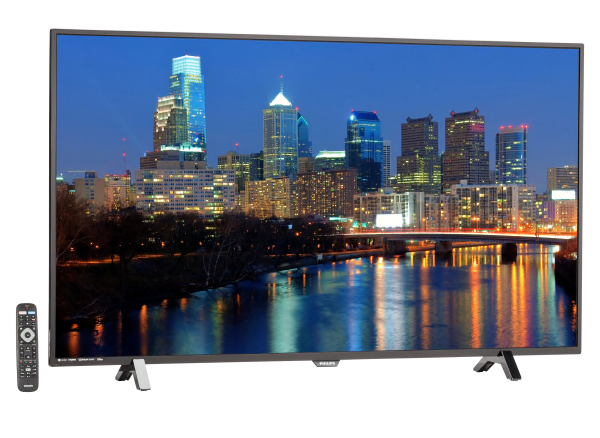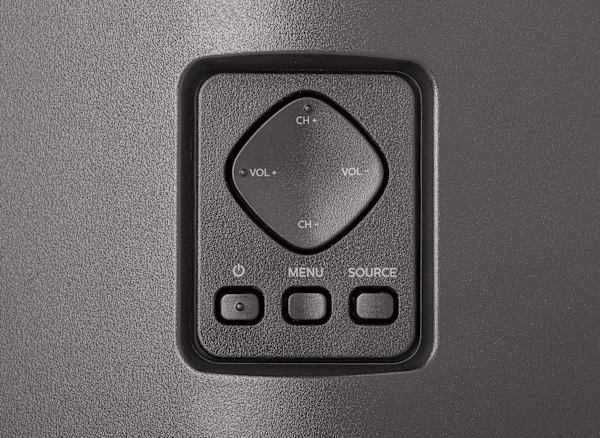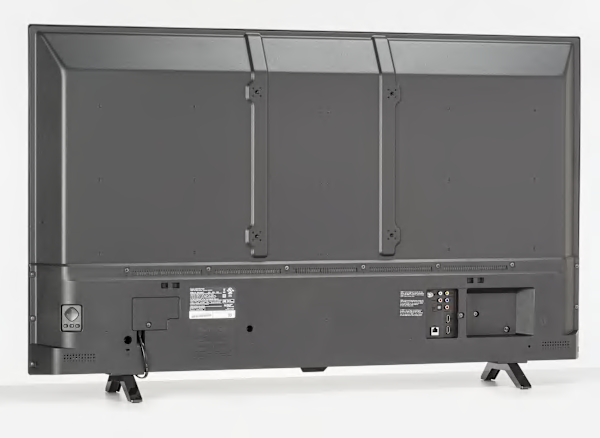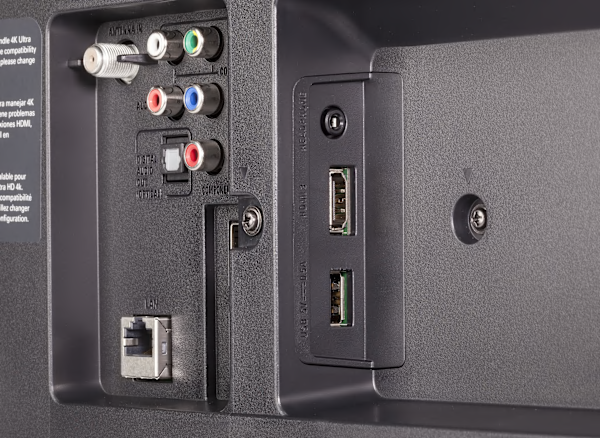HD PICTURE QUALITY. HD picture quality was very good. It did an excellent job displaying the finest detail of HD content. Contrast--the difference between the darkest blacks and brightest whites--was good, so images had depth and dimension, typical of most models we test. The brightness level was good, making it a suitable choice for most rooms. Black levels were only fair with darker areas of the image looking unnaturally illuminated. Dark scenes, in particular, were lacking in contrast and looked hazy. There was visible banding (unnatural contours) on scenes with subtly shaded light-to-dark areas, such as a sky during sunset, rather than smooth transitions. There were several very bright spots around the perimeter of the display (where the bezel meets the screen) that were distracting on dark scenes. This looks like a quality control issue, so be sure to inspect your TV if you buy this model. Film mode operation for HD film-based content was excellent, with no visible jaggies along the edges of objects during motion scenes. Deinterlacing on the other hand was only good, with some jaggies visible when converting 1080i video content, such as from cable, to the display's native resolution.
VIEWING ANGLE. This Philips has a wide viewing angle overall, better than that of most TVs. It will provide the same picture quality, with fewer problems than most TVs, for typical viewing conditions -- say, if your family is seated across a long sectional or in chairs off to the sides. The picture did show some dimming from the sides but not to any point we found distracting. With dark scenes this model didn't fare quite as well. When viewed from the sides, the depth of black levels varied depending on the vertical position of the viewer's head. As we moved closer to the screen this limitation became even more apparent, especially if seated on the floor looking upward where black levels brightened significantly.
ULTRA HD PERFORMANCE. Overall UHD performance was decent and HD-to-UHD upconversion fell short. All native 4K content (non HDR) we played on this model, including movies and test videos, was presented in full 4K detail with excellent fidelity when played back via the TV's HDMI input. Images were clean and finely detailed. High-resolution photos were a mixed bag, with images showing full 2160 pixel vertical resolution, but horizontal resolution was cut in half, showing compromised 4K detail on our test images. This TV does not support HDR (High Dynamic Range).
MOTION BLUR. This Philips TV has only fair motion performance, with significant blurring on our motion tests. This model does not include a blur reduction feature. The visibility of blurring on typical program content is often subtle and may not bother most people, but keen-eyed viewers may detect some loss of texture and detail on scenes with movement.
SCREEN REFLECTIVITY. Though not as mirror-like as on some models, this screen surface is glossy and therefore susceptible to reflections from a nearby lamp or window. It does a good job reducing glare from ambient light and maintains contrast in a brighter room environment.
SOUND QUALITY. This model has fair sound quality with below average performance. It's acceptable for typical programming, but shortcomings become obvious with movie soundtracks and music. Bass was lacking, as was treble detail, and the overall sound was thin and closed in. The speakers produced a good volume range so this model should play sufficiently loud in typical room environments, though quality does degrade at high volume levels. Also, at higher volume, dynamic compression kept the sound from distorting but also limited the clarity of peaks in loudness, which can be a bit distracting on some audio content. If sound quality matters to you, you might want to add a soundbar or other external speaker system.
EASE OF USE. The dark labeling of the connectors on the TV console is very difficult to read. On first power up there is an on-screen guide that helps you through setting up the TV. Philips' basic remote offers a traditional button keypad with high contrast labeling that remains fairly readable in a dimly lit environment. It provides direct button access to Netflix and Vudu streaming services.
INTERNET FEATURES. This TV claims to provide basic Internet functionality with a limited selection of applications via its "Net TV" portal, but some may find its operation faulty. Our attempts to connect the TV to the internet yields an onscreen "failed" message with one of our routers, but passed with another. None of our other tested TVs have exhibited this issue. Despite the "failed" message we were able to access Netflix, but no other services, including YouTube. We also purchased a second sample of this model and got the same result.
CONNECTIONS. This model has three HDMI inputs-- one supports ARC (Audio Return Channel), one "component/composite shared" input (which means you can only use one type or the other at a time). It also has one USB port, an optical digital audio out, a headphone out, an Ethernet port, WiFi wireless networking; DLNA, to access files within your home network. Note: HDMI and other cable connections made to the rear-facing panel will protrude beyond the panel's slim depth.
INCLUDED IN THE BOX. A printed user manual. A quick start guide. A remote control with batteries.
ABOUT ULTRA HD TESTING: We test UHD picture quality using 4K movies, videos, photos, and test patterns to confirm these displays deliver performance to this format's full potential. We check the TV's ability to reproduce 4K image detail, as well as high dynamic range (HDR) for TVs that support this capability. Image quality is tested using a 4K movie player connected to the TV's HDMI input, as well as from files stored on flash drive plugged into the TV's USB port. We also check the quality of 4K streaming from Netflix or YouTube (if the service is supported by the TV), and how well the TV can upscale HD movies to the display's higher UHD resolution while keeping artifacts such as "jaggies" along the edges of image content to a minimum. The best UHD TVs, and HDTVs, present high fidelity images that reveal the full quality of the best source content without degradation.



























